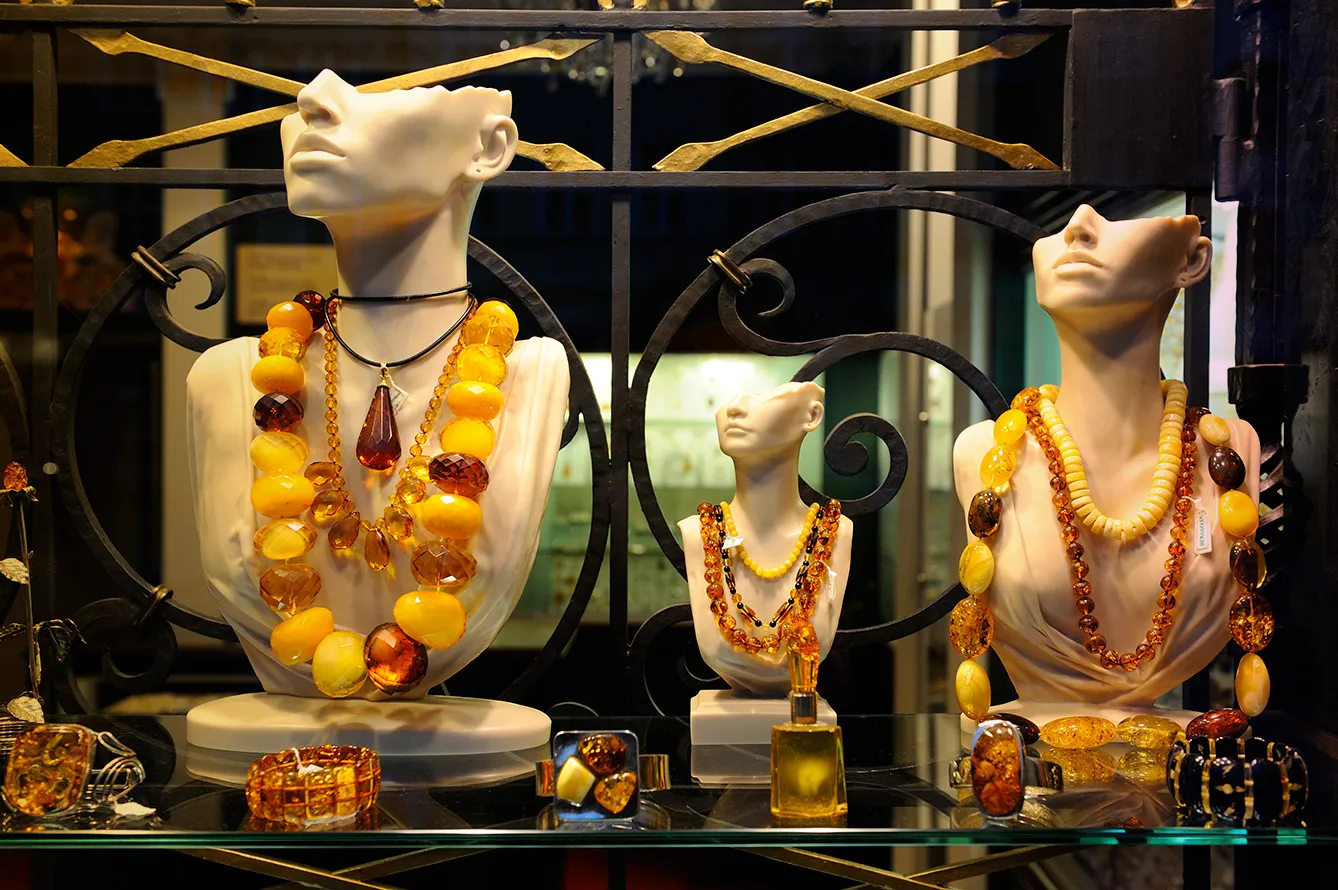These tears, however, were not in vain. Preserved under the glacier, they survived to our times, becoming more precious than anything that could have been found in the forest before the great shifting of lands and waters. If the tears of the prehistoric woods can be this precious, then how about the tears of a goddess?
Once upon a time, the Balt mythology goddess, Jurata, fell in love with a mortal. Such a match was clearly against the rules, but the love of the coupe was stronger. Jurata would come up to the shore to spend at least some hours in her lover’s arms.
When Perkun, the god of thunder, discovered their relationship, he became furious. One night, when Jurata left her underwater amber palace, she fell into Perkun’s trap. In his rage, he split the sea waves open and threw lightning bolts down from the sky, killing Jurata’s lover and destroying her beautiful palace. Today, the small nuggets of amber washed up on the Baltic shores come from this magnificent, mythological construction – witnesses to a love stronger than any boundaries.
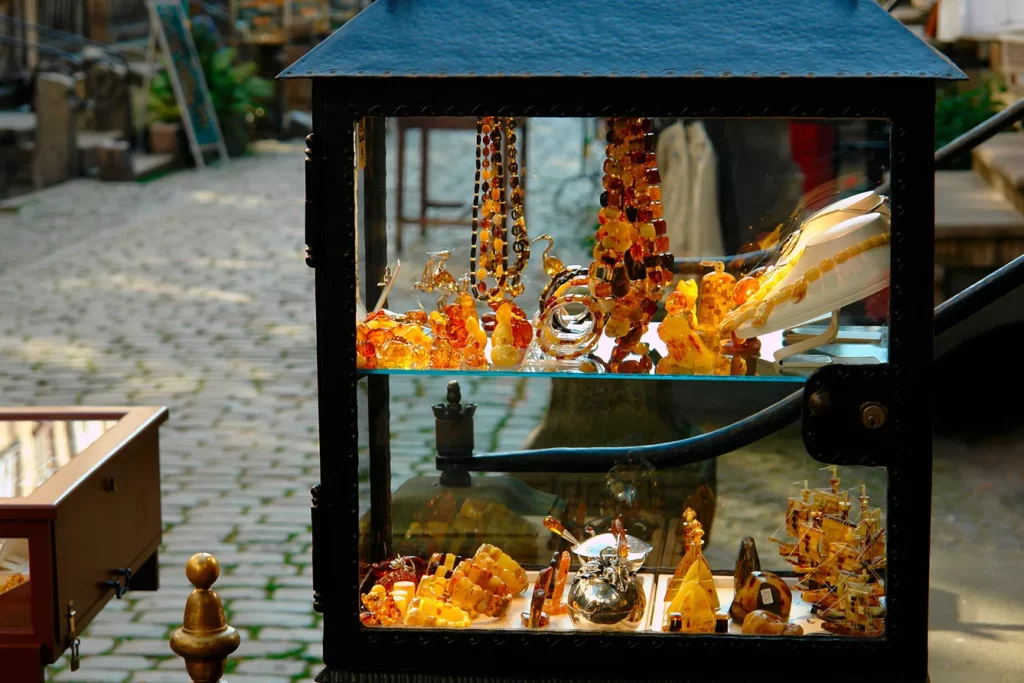
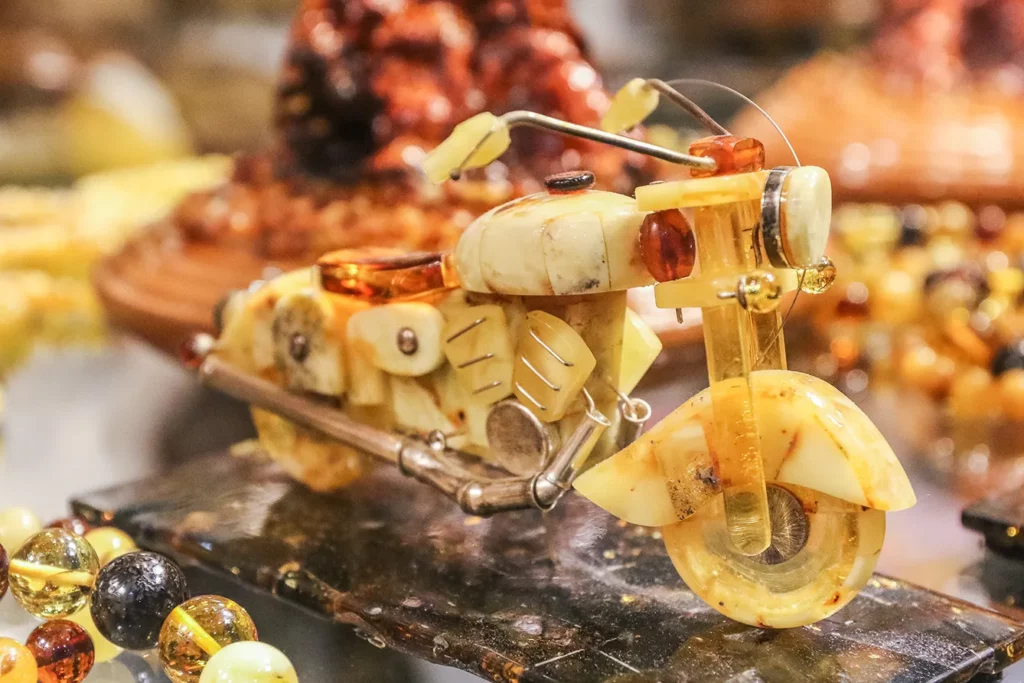
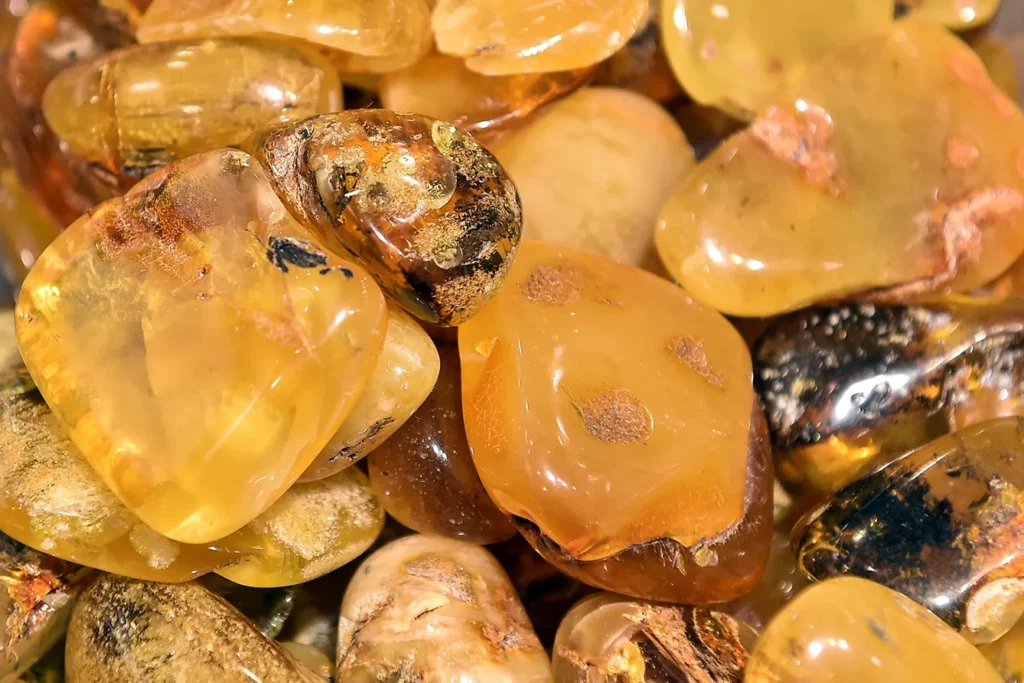
How much is Polish amber worth?
This romanticized tale perfectly illustrates how the locals always appreciated the presence of large amber deposits in the Baltic region. Out of all Three Seas States, Poland is one of the largest world exporters of amber, and with more deposits being uncovered, its resin gold is sure to continue to secure Poland’s big name in the amber jewelry business. It is estimated that nearly 70% of global amber jewelry is of Polish origin, with 90% of locally produced items exported to other countries of the world. In Gdańsk alone (the world’s capital of amber, as it is known), about 100 tonnes of the precious stone is processed annually.
The estimated value of the exported amber goods amounts to circa USD 300 million. What sets aside Polish amber is the condition in which it is sent abroad. Contrary to the Russian amber from the Kaliningrad region, Polish amber is first turned into magnificent works of art by local jewelers. Then, their work reaches even the furthest places on the globe.
Recently, interest in Polish amber has boomed in China. The country purchases about 40% of the total amount of Poland’s amber dedicated for export. But Poland’s role in the amber business is far from new. It is important to remember that Poland has been playing one of the main parts in the international amber trade for much longer than an average person realizes.
Centuries of history
And just how precious amber is can be seen in the fact that tribes living in the south of Europe would organize expeditions up north, towards the Baltic sea, in order to obtain amber as early as in the 5th century… BC! Truth be told, it took them until circa 1st century AD to reach the Baltic shore, but once they did (following the expansion of the Roman empire), they were willing to travel probably as far as today’s St Petersburg in Russia (and certainly to today’s Poland’s Gdansk) to trade with the locals and purchase the warm, yellow stones.
The trail was active probably until the early 6th century. Poland was an important part of the route, with the trail crossing its today’s territory from the south to the north. Perhaps an example of a real-life treasure from the 1st century will be helpful to illustrate just how much stone passed through the territory of Poland via the famous Amber Road. The world’s largest archeological amber find was deposited in today’s Partynice (near Wrocław).
The first part of the treasure was discovered in 1906, and the second in 1936. The total amount of amber found in that one location is estimated to have come up to roughly 1.5 tonnes! To sparkle your imagination further – today’s market value of 1 kilogram of amber (in lumps larger than 200 g) oscillates around EUR 4,260. Now multiply that by 1500… We are quite serious when we say that Polish Baltic amber has always been a sought-after commodity.
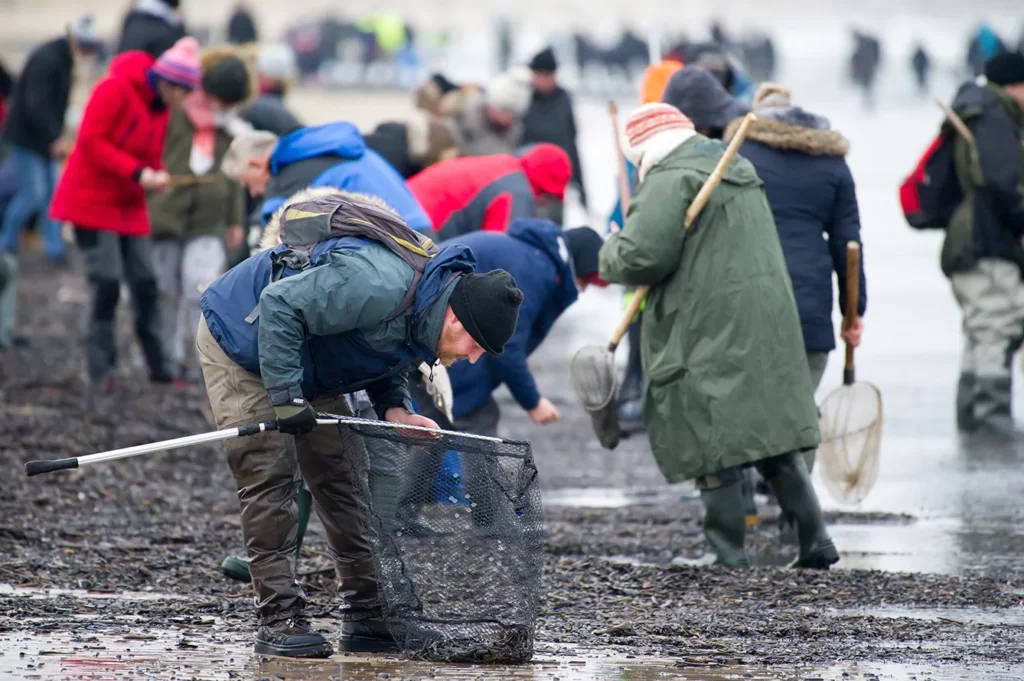
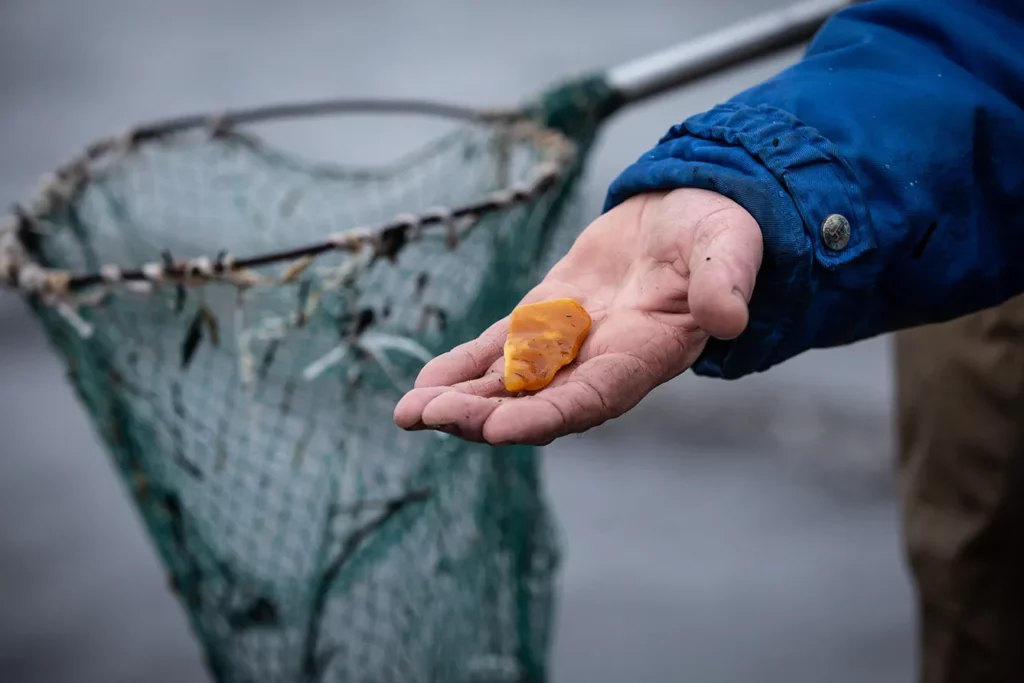
Not only at the shore
Why is that? Poland is lucky when it comes to the deposits of amber located on its territory. The estimated volume of amber deposits in Poland as of 2021 amounted to circa 3.5 thousand tonnes. You might be surprised to learn that not all of those deposits are located at the Baltic shore. Actually, large deposits of amber may be found in the area of Lublin, in the southeast of Poland (circa 57 thousand tons). The data provided by the governmental institutions also reveals that it is possible to obtain between 5 and 6 tonnes of amber simply at the beaches, where it gets washed up. One generous Baltic, you may say!
Where and when
I bet that by now, you are already packing your sieves and shovels and are ready to come to Poland to explore, but before you do, you might want to know a few basic tips. It is legal to search for amber in Poland but only on the beaches and Baltic shores (in fact, it is a compulsory pastime during any sea break in Poland). However, digging for amber on the dunes, in the forests, and in national parks is illegal. You also cannot use any specialized equipment, such as pumps or large industrial sieves. It is best to arrive at the shore, especially after particularly stormy weather (or if you want to do it properly – during a storm), and definitely at night, equipped with a UV light torch that makes amber glow yellow. If searching in the darkness is not for you, then make sure to arrive at the beach early enough – before competition from other amber seekers. Whatever you find – is yours to keep, including the joy and feeling of accomplishment that can stay with you for the rest of your life.


